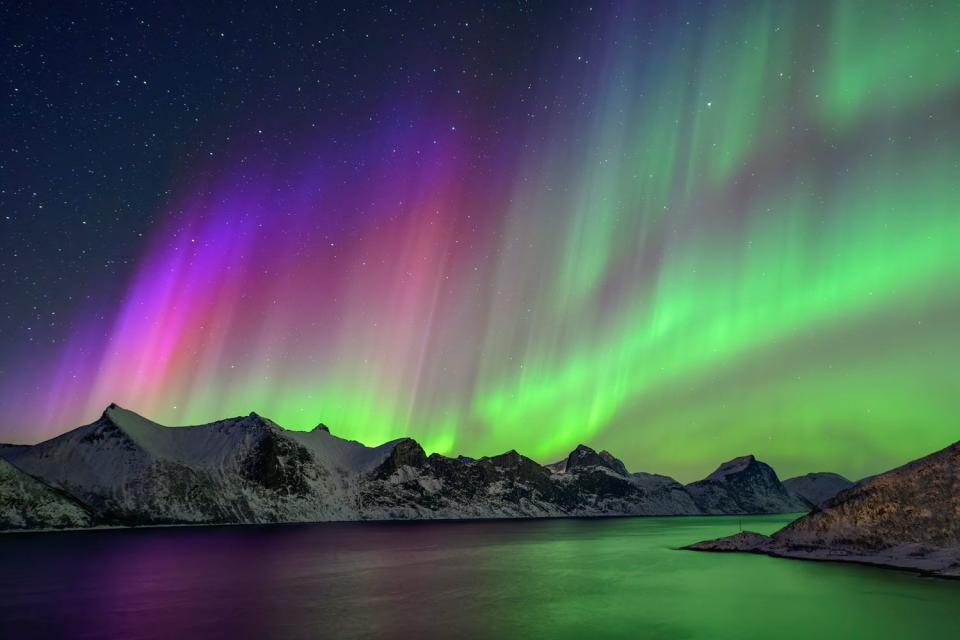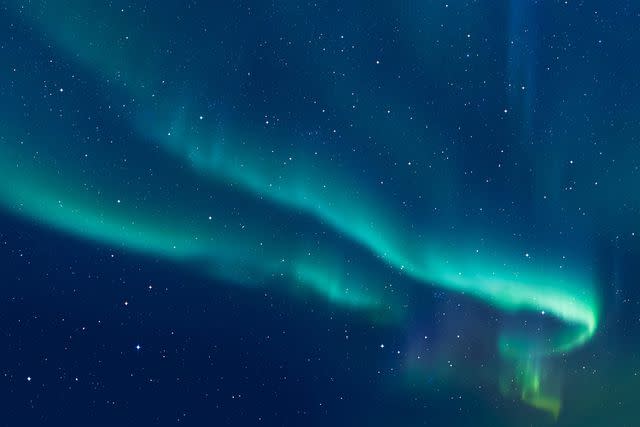The Northern Lights May Be Visible Across Parts of the U.S. This Week. Can You See Them from Your State?
Aurora borealis will be "faintly visible as far south as northern New England," a spokesperson for NOAA tells PEOPLE

Getty
Northern lights in NorwayGrab your camera, the northern lights may be visible in your area this week!
On Wednesday, July 24, the light display, also called aurora borealis, may be visible in quite a few parts of the United States, according to a news alert from the National Oceanic and Atmospheric Administration’s Space Weather Prediction Center.
Thanks to an increase in geomagnetic activity, northern and upper Midwest states — from New York to Idaho — may be able to catch a glimpse of the aurora’s colorful hues.
“In ideal viewing conditions, the Aurora would be faintly visible as far south as northern New England,” Erica Cei, a spokesperson for the NOAA, tells PEOPLE in a statement. Unfortunately for those in the Big Apple, Cei says that the lights will “definitely not” be visible in New York City.
Regardless of where you are in that region, Cei tells PEOPLE, sky conditions have to be practically perfect — “clear, very dark, no light pollution” — for the aurora to be visible.
Related: How to Watch the Upcoming Northern Lights and Where They Will Be Visible
The cause of the lights’ extended visibility is a coronal mass ejection (CME), or “large expulsion of plasma and magnetic field from the Sun’s corona,” according to the Space Weather Prediction Center.
This one, a “halo CME” that erupted on July 21, is “expected to arrive at Earth and lead to increased geomagnetic activity” on July 24, NOAA says.
Currently, the agency has issued a watch for a G2 (moderate) geomagnetic storm. Storms of this classification, Cei tells PEOPLE, “happen about 600 times per solar cycle," or about four to five times per month, on average.

Getty
Northern lights in NorayRelated: Victoria and David Beckham Share Stunning Pics Watching the Northern Lights — See the Photos!
Although the University of Alaska's early projection said that the northern lights would be visible on Wednesday, July 12, and Thursday, July 13, when it comes to timing, this latest storm — and increased aurora visibility — may be “fashionably late,” according to Tamitha Skov, a space weather physicist.
"Sadly, these solar storms are often fashionably late, and with all the 'traffic' this one will endure on its way to Earth,” Skov told Newsweek. “I wouldn't be surprised if the storm doesn't arrive until late on July 24.”
By “'traffic,” the physicist clarified, “I mean a lot of slow solar wind is ahead of this CME and it has to push through all of this during its journey, which tends to slow the storm down a bit compared to the model predictions.”
Never miss a story — sign up for PEOPLE's free daily newsletter to stay up-to-date on the best of what PEOPLE has to offer, from juicy celebrity news to compelling human interest stories.
If you are unable to catch a glimpse of the iconic lights this time around, do not fret. There will likely be a “larger, more consequential storm” later this year, Cei says.
“Since we're in the peak of the 11-year solar cycle, we're almost certain to get another G4 (severe) or G5 (extreme) storm at some point before sunspot activity diminishes in frequency and intensity next year,” she adds.
For more People news, make sure to sign up for our newsletter!
Read the original article on People.

